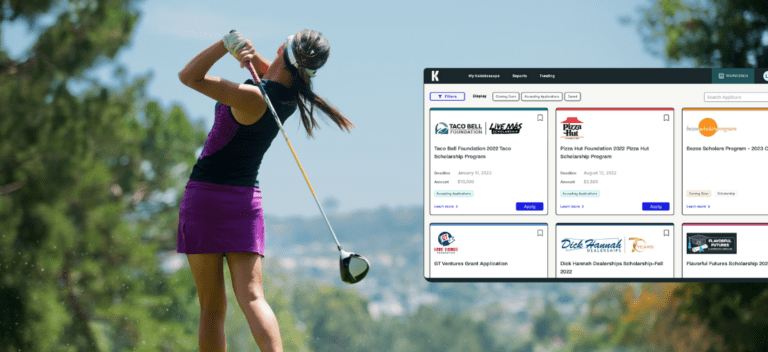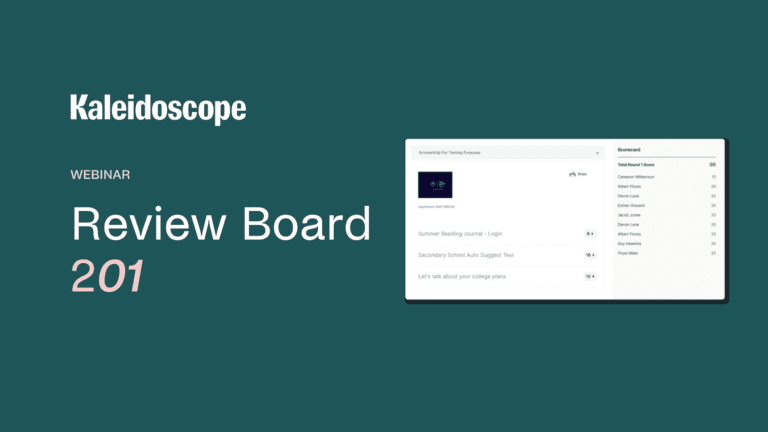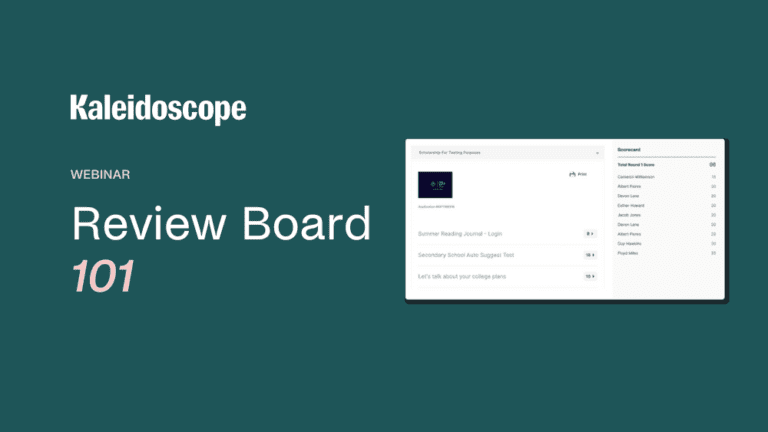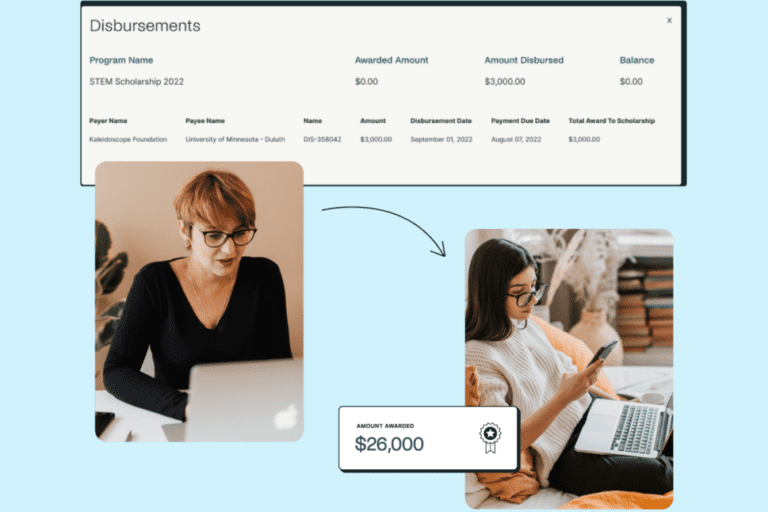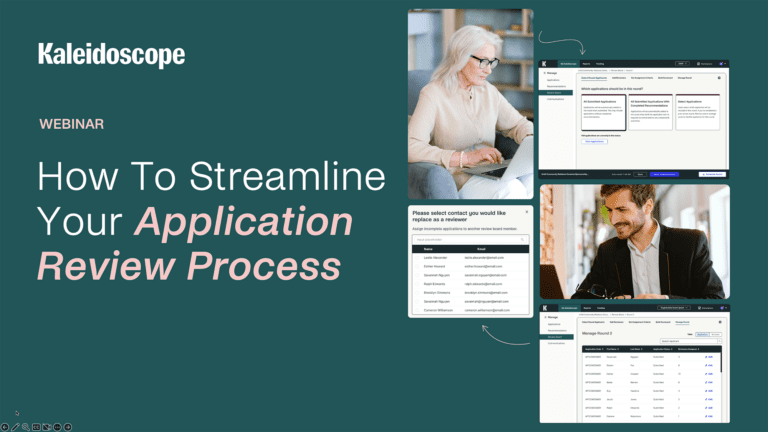In 2021, student debt hit an all-time high. According to Investopedia, 30% of students took on debt to fund their education and the average student debt rose to over $38,000 per student.
Despite the gravity of the student debt problem, the barriers to searching for funding can often discourage students from seeking financial support even when they’re eligible. For example, according to a report by the National College Attainment Network, in 2021, about 813,000 students who were eligible for federal grants did not complete the FAFSA. The same year, over $3.7 billion of these grants went unclaimed.
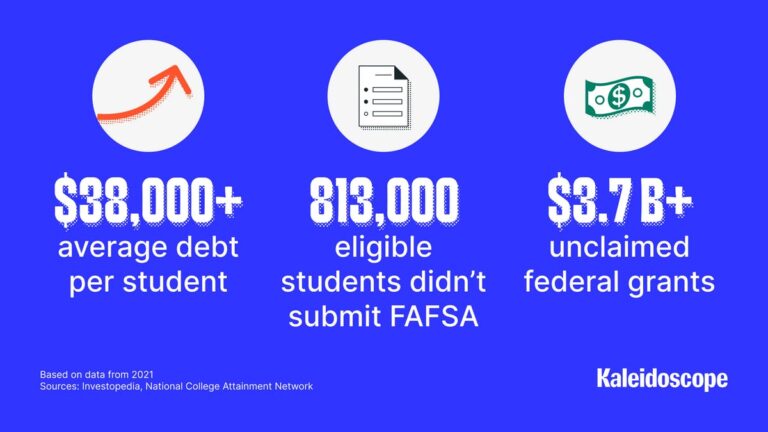

It’s shocking that so many dollars did not end up in the hands of students, despite the need for funding. It’s possible that these students didn’t fill out the FAFSA due to lack of guidance or support, being unaware of the option, or confusion about the process. These barriers exacerbate the growing educational gap for students from underrepresented communities or those who would be first-generation college students.
The bottom line is this – no qualified student in need should ever assume the burden of debt if they qualify for other means of funding. And no committed dollar should have such a hard time landing where it is needed most, in the pockets of students. The need on both sides is too great and the outcome is too important.
Digital solutions eliminate the barriers for students who are seeking funding by making it easier for them to search and apply for awards, while providing funding organizations with the tools to manage the process and reach those they want to support. If your organization is looking to maximize your program’s impact, here are a few strategies to get you started.
1. Enlist a marketplace solution to ensure your application is visible to students who are already seeking funding
To make sure your dollars are found by those in need, your scholarship or grant application should be visible to the students you’re actively seeking to support. However, this is usually easier said than done. Marketing your program can be costly and eat up funds that could otherwise go to students.
By hosting your program on a marketplace platform, you place your application where those you are trying to reach are already primed to complete it. Those who are already applying for other awards would be more apt to complete an application when they are already completing others.
There are many aggregator websites that list scholarships and grants in one place, but they can become a graveyard of dead links and outdated information. Marketplace platforms ensure that the information is up to date and that the transition from program identification to completing the application is seamless. By finding applicants where they already are, you can expect more applicants to find and finish the process of applying.
2. Make the application process accessible and easy
An intuitive and transparent scholarship or grant application encourages more students to finish their applications and maximizes the reach of your programs. Therefore, the applicant experience should be at the forefront of how your application forms are designed. When applicants are able to visualize their progress as they complete each step of the application, they feel a sense of transparency and accomplishment. This improves the applicant’s experience and their likelihood of completing the application.
It’s also important to consider how accessible your application is for completion. Is your application able to be accessed digitally, in both mobile and desktop formats? Ensuring accessibility regardless of the technology a student has access to will allow for programs to be reached by everyone. For some, regular access to a desktop device is simply not possible.
To ensure applicants complete the application, it’s critical to enable easy data fulfillment. Be sure your system allows your applicants to drag-and-drop document uploads and electronically request letters of recommendation directly from the application. This simplifies one of the most frustrating parts of the application experience, as applicants no longer need to email back and forth with their recommenders.
Finally, you can remove a lot of friction from the process by making your forms ‘smart’. This means that your application can be pre-filled for information that’s previously been provided by the applicant. They will be able to save time and skip questions that aren’t relevant based on previous responses.
3. Leverage digital review tools to streamline your process to make sure you select the right candidate
The review phase is one of the most challenging and tedious phases to manage when offering an award program. This is largely due to the time and effort needed to ensure an effective and efficient process. Receiving a large volume of applicants is fantastic, but if you’re not adequately prepared for it, your review board might find themselves confused, buried in applications, and overwhelmed.
By using digital review tools, collaboration and transparency are possible during the review process. Your review tools should allow you to monitor the progress of your reviewers and communicate about applications being scored. Award management software can help you stay on top of deadlines by allowing you to track the progress of each reviewer. If you notice a reviewer is falling behind, you can take immediate action by sending them a nudge to remind them of their tasks. You should also have the option to re-assign to another reviewer and notify them of this change, if needed.
Furthermore, the tools you use should encourage collaboration between individual reviewers. Reviewers should be able to communicate easily by tagging each other and commenting on individual applications when they need to call each other’s attention to particular details.
4. Use digital tools to set clear criteria for scoring to better automate selection
It can be hard to judge an applicant’s potential solely from their application materials. Yet, the review board has the tall task of deciding who is the best fit based on this information. If not done thoughtfully, this can become subjective. It’s essential to clearly define the criteria you’re looking for in an ideal candidate. Based on chosen selection criteria, thoughtfully built rubrics ensure each reviewer is in alignment during the scoring process.
Award management software enables you to build consistent scoring rubrics that reviewers can fill out as they view each application. You can set up your scorecards to place more weight on the most important criteria and automatically calculate each applicant’s score. Then, once it’s time to narrow down your choices, you can filter your applicant pool to focus on the top candidates.
5. Think big and utilize relationship management tools to allow your award to go beyond dollars and cents
To make the greatest impact with your program, your investment in those you select does not need to end at the disbursement. This could take shape through mentorship, renewable awards, recruitment for potential internships or jobs, and more. Choosing a tool that allows you to host a mentorship program or easily set up award renewals will allow you the flexibility to easily increase your impact.
For those considering making your programs renewable, you have a few options. Your awards could automatically renew, you could require verification of enrollment and grades, or you could require scholars to reapply each year. Whatever choice is right for your program, you want to be sure the tools you decide to onboard allow you to configure your desired renewal process.





